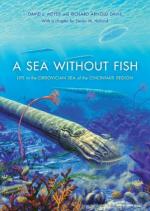|
This section contains 345 words (approx. 2 pages at 300 words per page) |
In geologic time, the Ordovician Period, the second period of the Paleozoic Era, covers the time roughly 505 million years ago (mya) until 438 mya. The name Ordovician derives from that of the Ordovices, an ancient British tribe.
The Ordovician Period spans three epochs. The Lower Ordovician Epoch is the most ancient, followed in sequence by the Middle Ordovician Epoch, and the Upper Ordovician Epoch. The Ordovician Period is divided chronologically (from the most ancient to the most recent) into the Tremadocian, Arenigian, Llanvirnian, Llandeilian, Caradocian and Ashgillian stages.
Much of the continental crust that exists now had already been formed by the time of the Ordovician Period and the forces driving plate tectonics actively shaped the fusing continental landmasses. Near the margins of the continental landmasses, extensive orogeny (mountain building) allowed the development of mountain chains.
The fossil record provides evidence to support the demarcation of the preceding Cambrian Period from the Ordovician Period. Drastic changes of sea levels resulted in massive extinctions among marine organisms. In accord with a mass extinction, many fossils dated to the Cambrian Period are not found in Ordovician Period formations.
The fossil record establishes that vertebrates existed during the Ordovician Period. As with the Cambrian Period, the Ordovician Period ended with a mass extinction of nearly a third of all species. This mass extinction, approximately 438 mya, marked the end of the Ordovician Period and the start of the Silurian Period.
Although there is no evidence of an occurrence equivalent to the K-T event, it is possible that an impact from a large meteorite may have been responsible for the mass extinction marking the end of the Cambrian Period and start of the Ordovician Period. Impact craters dating to the Ordovician Period have been identified in Australia.
See Also
Archean; Cenozoic Era; Cretaceous Period; Dating Methods; Devonian Period; Eocene Epoch; Evolution, Evidence Of; Fossils and Fossilization; Historical Geology; Holocene Epoch; Jurassic Period; Mesozoic Era; Miocene Epoch; Mississippian Period; Oligocene Epoch; Paleocene Epoch; Pennsylvanian Period; Phanerozoic Eon; Pleistocene Epoch; Pliocene Epoch; Proterozoic Era; Quaternary Period; Tertiary Period; Triassic Period
|
This section contains 345 words (approx. 2 pages at 300 words per page) |


